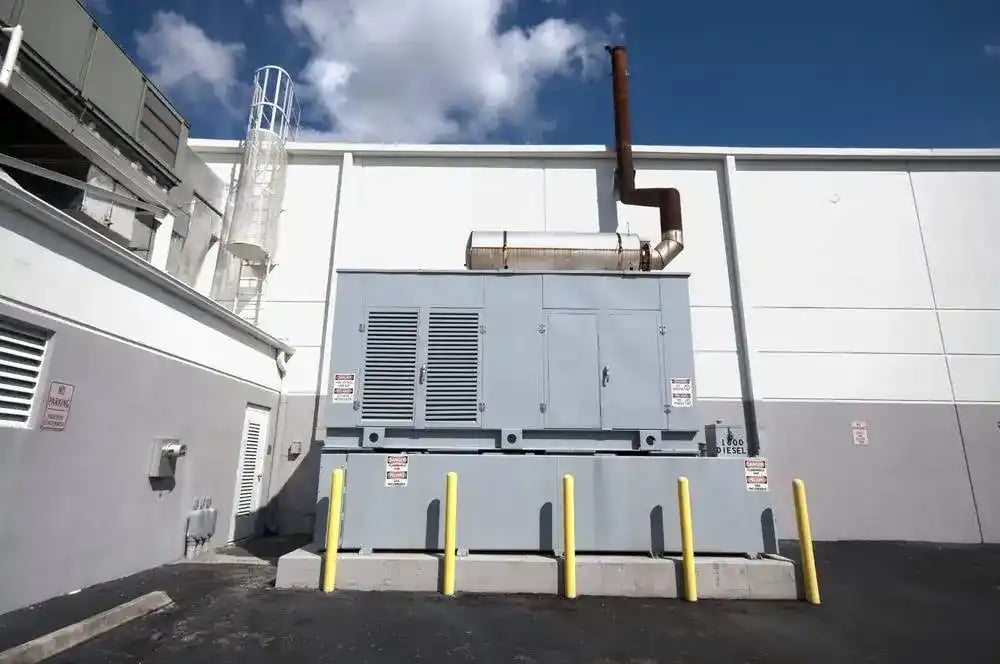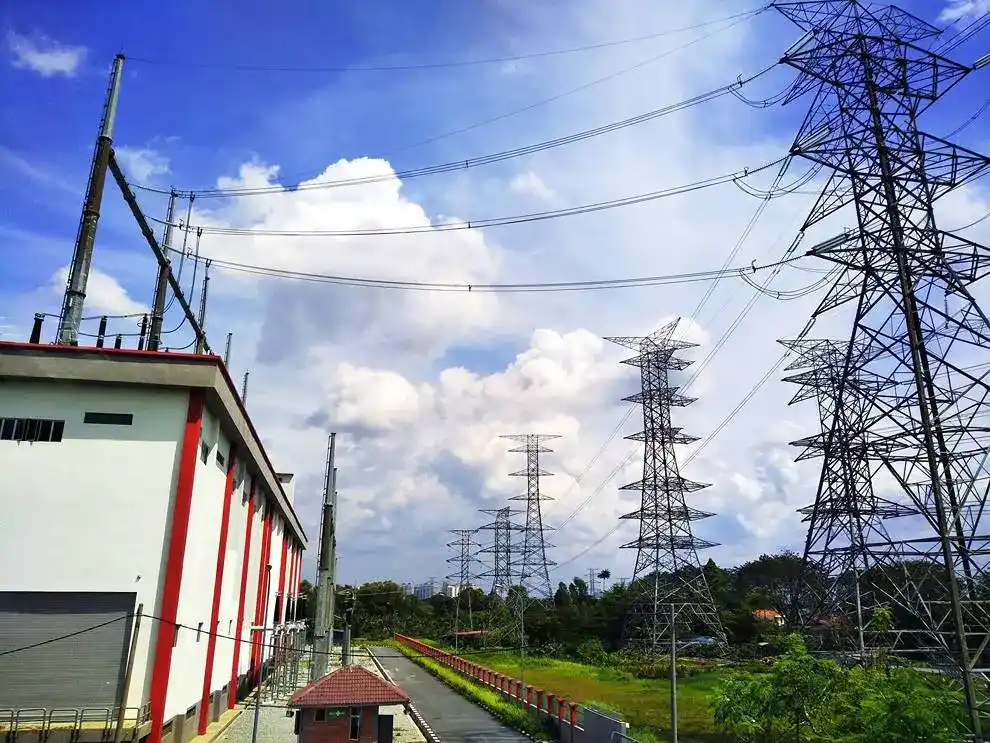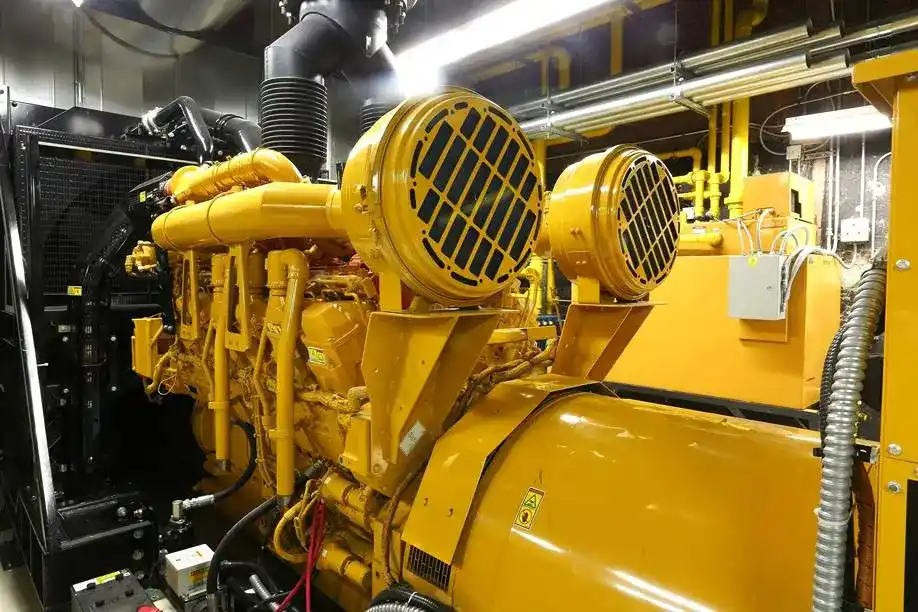Our professionals will have a solution for both high-rise and low-rise buildings based on laws and regulations enforced by the authorities.
To facilitate safety and comfort both, our engineers use NFPA standards, Chicago Building codes and Chicago Electric code in their design process, to provide you with utmost safety and functionality in your system.
From loud noises to greenhouse emission and from ventilation to other healthcare considerations, we got you covered.

Legally speaking, our MEP engineers decide this based on the factor of the building you’re living in. Chicago City Building Code has made it mandatory for office buildings, both high-rise, and low-rise, to install an emergency power system.
High-Rise Office Buildings:
Low-Rise Office Buildings:
We are one of the fastest growing MEP design firms in the construction industry. We pride ourselves on having a fast turnaround while providing cost effective solutions. We are licensed in 50 states and are your one stop shop for all MEP design needs.
We are licensed in all 50 states!
We design to the perfection
Enjoy our lightening fast turnaround
We have completed so far!
Our designs are approved by DOB in one go
The best service experience in the market

In today’s connected world, electrical power failure is synonymous to loss of revenue for the global economies and industries. How big or small the extent of this loss can be solely dependent on downtime of the power outage. For some industries that do not depend on electrical operation alone, this power failure might just be a blip on the radar. But for the industries who rely mostly on electricity for their business to operate – such as airports, hospitals, communication and telecommunication centers, and data control centers – this could result to a devastating loss of profits or resources, or at worst, a life-and-death situation if not prevented.
Enter emergency generator systems, and you have the perfect solution for the unpredictable electrical downtime. With this electrical equipment in place, you do not have to worry that your building or your business will not function. Rest assured that your airport flights are up and running on time even when the power failure takes place.
If you have emergency generator system as your backup source of electricity for your hospital, you do not run the risk of endangering the lives of your patients who are completely reliant on the medical equipment for them to fully function, as well as all the medicines and vaccines which are in need of constant temperature control.
For data control centers which would always need a rigorous surveillance, ten seconds of downtime or more could cause an impending hazard or catastrophe. Install emergency generator systems to get rid of the worries and completely acquire real-time results to mitigate accidents or enhance security.
With all of these benefits in place, it is no wonder why industries are investing on long-term electrical solutions such as emergency generator systems to instigate the surge of their business. At NY Engineers, we are not only professional electrical engineers who produce detailed drawings for your small-scale to large-scale commercial, government, office or residential building projects. At the onset, we plan and confer with you regarding the critical mission of your business. We are conscious of how the electrical system, per se, could make or break the operation of whatever industry you are affiliated with.
We are not only experts in the preliminary design, planning, testing and commissioning, turnover and facility maintenance of your electrical system. Before we have come to this conclusion, we are already operating from the three pillars of sustainability – social, economic and environmental – and we intrinsically understand the interconnectivity of the world’s industries and how electricity plays a key role for your growth and success. Emergency generator systems bridge the gap between the inefficiency and upsurge of any business or industry.

This type of power systems design is implemented to provide power to systems which may cause a huge loss if left without power for more than some moments. Some of these design systems include sprinkler systems, fire alarm systems, alarms, life-support systems at the hospitals, chair-lifts, elevators and so on.
The design of this kind of power system is expected to:
The design should provide a facility for firefighter operations, and emergency evacuations and such.
The design is expected to:
The design for this kind of system is implemented to provide backup power for the comfort of the building attendees and users. These systems provide facility to prevent data losses from computers, provide human comfort through HVAC, keep the security system coverage to 24/7, keep refrigerators, heaters and communication system up and running according to the requirements.
The design is bound to:
Generally speaking, homeowners may need emergency generators in the case of uncalled for a power outage, in which case, they would use it for the HVAC comfort, freezers and refrigerators, security systems, and lighting. Community lots may not only get financial benefits but in some cases, the safety of lives on the lot. And industrial lots or hospitals are where the backup power becomes critically important.
Nearby Engineers New York Engineers has full knowledge about when to incorporate which type of generation system to fulfill your needs and the legal requirements.
Let’s have a look at some of the standards of our engineers, driven directly from the Chicago Building Code.
Emergency Power System:
Standby Power Systems:
Optional Standby Power Systems:
Not necessarily required by law but it will be good if it can handle these loads,
Installation and Uninstalling Aspect : The NFPA 70 states that UL 2200 Standard for Stationary Engine Generator Assemblies must be a benchmark for all the emergency and standby generators, to be used in the city. On that note, it’s the duty of NYE engineers to practice safety with respect to the installation.
One aspect of safety is to not install the generator or its energy distribution channel in the same room as the main electrical assembly service. So the generators are then placed in an independent and isolated room other precautions like fire-barriers etc.
It is also essential to take care of the piping network. All the piping that passes through the room, that is not related to sprinkler systems or cooling systems, must go uninterrupted through the room. The fuel tanks which will be used for the generator are the only ones allowed inside the space.
Environmental Aspect : All fuel combustion appliances must be registered with the New York City Department of Environmental Protection. This includes both emergency and standby generators. Furthermore, our professional engineers cater to the possible dangers of natural hazard like a storm, flooding, sewer spew, and other physical dangers to moisture or materials, as defined in the NFPA 110. All this, while designing for these locations to be readily accessible in all type of hazards.
Operational Aspect : Our professionals are well-versed and experienced with tackling operational issues related to documentation, charging system for the batteries, inspection of faults, and lighting to visibility and untied small material that may disrupt the system.
Small objects are to be kept away from the room. In essence, objects like small blades, documents, loose paddings, plastic parts or wood fibers should be kept well away from the intake and exhaust channel, although we prefer to keep the room free of these troublesome elements altogether.
Lighting should be adequate, more than 1000 lux in both day and night. It should also never be chain-mounted; rather, it should be fixed hung to prevent oscillations of light under wind pressure and thus accidental damage. They may as well be surface-mounted. The fixtures should also be designed with a thermal capacity to bear high thermal loads. Moreover, they should also be resistant to dust and excess water vapor levels in the air. All these considerations are made by our engineers when designing the proper system for you.
Healthcare Application Aspect : Most noticeable in the case of medical facilities, the generator system, with its noise and pollution need to be taken special care of to mitigate the effects on the patients, ICUs, and the peace-seeking troubled attendees of the hospitals.
Our professionals are efficient at treating the acoustical flaws of the power generator, too. During the architectural design of a medical facility, the placement phase must be discussed with a proper MEP engineer so that these disturbances are minimum.
Electrical Aspect : The battery system of the generator is designed so that the voltage output never drops below ninety percent, with that being said, there’s also a deployment of an automatic recharge system as the law require. Electrical knowledge is also a core part of designing a power system and so even if you do not understand all of this, know that our engineers do and will make sure that everything is satisfied.
Proper fire-barrier, horizontal assemblies should be incorporated and only the piping of the sprinkler system may be incorporated. The voltage calculation is done prior to clearances for EPS and EPSS system because these may be considered as a variable that depends on the voltage.
Noise Aspect : We at NYE believe in providing the utmost comfort to our employers, and thus the aspect of noise is given special importance to, aside from the environmental aspect. A generator’s noise may disturb the occupants of a building and reduce the efficiency of work by around 60%. These noises arise from parts like cooling fans, electrical noise, exhaust, and engine block.
The prominent reason for the noise is vibration. Our professionals use especially rubber paddings, isolation springs and dampers to reduce noise pollution within the system and thus reducing overall noise within the building. However, there’s still some noise and therefore the overall placement of generators means dedicating a room to it that is far away from the occupants, especially the busy areas.
One more way to reduce the noise is by using exhaust mufflers, although it requires advanced knowledge of air flow and distances between the ventilators, the air dischargers, and the occupied spaces.
Our engineers, therefore, may deploy special sound attenuators, oversized enclosures and such to the conduit runs to dim the primary pathway for generator noise.
Fuel Aspect : This is one of the most important aspects of a power generator. Fuel is the direct source of energy and without proper precautions, you might find your machine operation but without fuel. If that’s the case in an emergency situation, you’re in big trouble.
Our MEP engineers have precise calculations for the amount of fuel required for the power generator per hour. Moreover, according to the requirement by the code, a full fuel input for around six hours of operation is measured and made available with a factor of safety. For all emergency situations, our engineers deploy the use of diesel as per the Chicago building code requirements. This diesel is stored on site in the sub-base tank or within a remote tank inside the room.
For residents who consider this overwhelming, the deployment of natural gas is also applicable for R-2 occupancy residential lots. However, as a precaution, as the law required, our engineers deploy a cut-off valve between the supply of gas to the generator and other appliances running on gas.
Exhaust and Ventilation Aspect : NYE professionals are the masters of computational fluid dynamics, something they’ve been doing for the entirety of their career. If you know anything about this software, it’s two things. One it is tough and requires a degree but the second is how useful it is to plot streamlines and potentials of fluids.
In our case, these fluids are exhaust fumes. On account of the US Environmental Protection Agency compliance of tier four, urea injection and other solutions like catalytic reduction are required, to reduce the amount of pollution.
Our MEP engineers are well-experienced with the sizing, configuration and optimal placement of conduit runs. Our engineers are also well-versed in the application of radiators to reduce the airflow requirements in the room, though this comes with an added adverse effect of reduced engine cooling reliability of the system.
How exactly does the emergency generator system work? Before we dig down deeper to the technicalities, let NY Engineers take you to a tour of the basic fundamentals of this electrical equipment. Whenever your building or your area undergoes brownout, or worse, blackout, a disruption in your power grid takes place. Emergency generator systems can be calibrated to kick in and provide you undisrupted flow of electricity.
What happens behind the scenes of how the electrical power grid works can only be accounted for by the expert knowledge of electrical engineers. Emergency generator systems might look very simple and straightforward from the outside, but the intrinsic design of the system in itself requires a skilled proficiency from electrical engineers.
At NY Engineers, we incorporate a time-tested approach by designing and calculating the backup power and the building’s electrical systems. We make sure that these two systems are working in conjunction to handle your critical electrical loads, because if there is a spillover, then it beats the whole purpose of having an efficient backup system in the first place.
When designing the emergency generator systems, we aim for accuracy and adequacy. The size, extent and type of your generator is a combination of calculated load factors such as the amperage, surge wattage and rated wattage output. However, given our expertise in designing these systems, we employ advanced technique such as parallel generation systems to accommodate all the total calculated loads, rather than the whole electrical system completely depending on one generator alone. This eliminates the risk for failure since you have options for increased flexibility and reliability.
To further complement these backup power systems, we utilize Automatic Transfer Switch (ATS) and Uninterruptible Power Supply (UTS), respectively. You can depend on ATS to act as a relay between the utility companies to your emergency generator system during a power outage; and vice versa when the electricity is restored. For instances where you cannot afford to lose critical data in your front line systems and servers, UPS acts as the first line of defense and aids the emergency generator system in short-lived outages.
At NY Engineers, we make sure that you do not only get the basics right, but you are primed on how to keep your emergency generator system in tip-top shape. On top of code compliance, we advise you to conduct monthly routines of generator system testing and plan for the fuel management. Your generator's natural gas or diesel fuel lines should be well up to speed when needed. Take a peek on our industry-specific projects to see how our emergency generator systems efficiently save the day.
382 NE 191st St , Suite 49674
Miami, Florida 33179276 5th Avenue, Suite 704 #904
New York, NY 10001